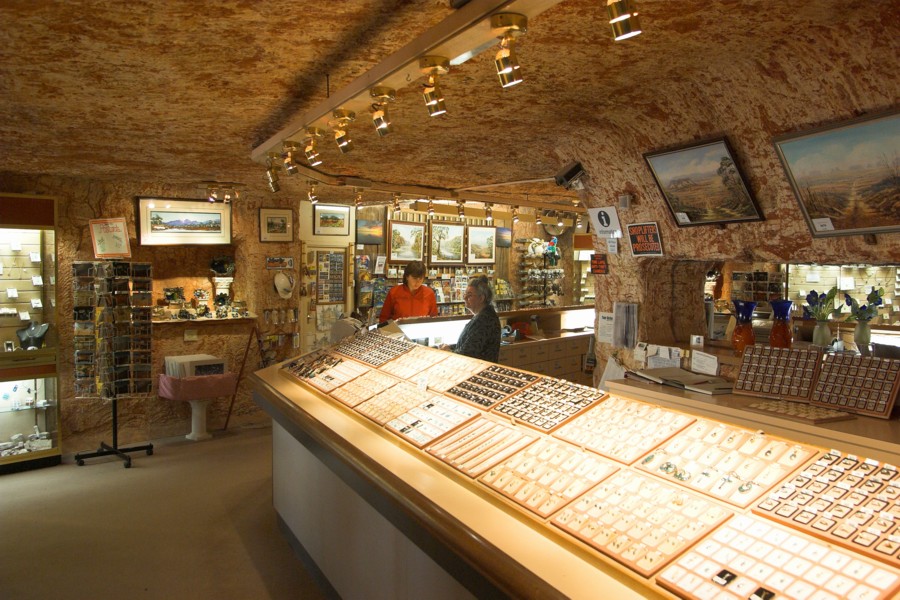The town is referred to as the “opal capital of the world.” Coober Pedy is an Aboriginal word that roughly translates to “white man in a hole.”
Nothing about the Australian town of Coober Pedy is for the faint of heart – it’s blisteringly hot, located in the country’s remote Outback interior and is usually covered in a thin veil of red dust from local opal mines. But rather than move to a cooler, more hospitable climate, residents have gotten creative, building a subterranean community in old mines and creating everything from dug-out homes to churches.

Today, around 80% of Coober Pedy’s 3,500 locals live underground. Even in the shade, it’s common to feel temperatures of 100-plus. Much to the dismay of locals and visitors, there’s little rainfall to provide relief from the harsh sun.
Coober Pedy’s origins lie underground, too. About 100 years ago, a teenager discovered a piece of opal in the area. From there, miners flocked to the region, and soon enough, the town of Coober Pedy – the world’s largest source for opals – was born.

In its heyday in the 1970s and 80s, the town was home to more than 1,000 miners. Today, there are only about 100.
Residents spend a lot of time in holes—that’s where 80 percent of them live. Most of Coober Pedy is a subterranean community built into underground shelters called “dugouts” where the temperature stays a cool 75 degrees even on the hottest days.
Some homeowners have hammer-and-picked out bookshelves right into their sandstone walls, and a local underground church, pictured, has intricate carved portraits of the saints.

One woman even has a swimming pool in her (below-ground) living room. Check it out for yourself that next time you’re in the middle of the South Australian desert! Coober Pedy boasts a dozen hotels and B&B with underground rooms.
Lately, though, the underground town has been attracting attention for a new reason: its hybrid energy project. Harnessing the area’s sunny, windy weather, Coober Pedy’s renewable energy plant generates 70% of the energy needed to power the town.

In a place where temperatures are known to climb to 53°C in the summer, cleaner sources of energy provide welcome relief from the smoke and heat of the diesel fuel formerly used to power the town.
At the centre of the opal mining industry for decades, Coober Pedy is now drawing new residents for its ability to self-sustain, too.